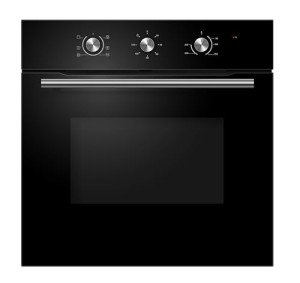Why Incorporating A Word Or Phrase Into Your Life Will Make All The Difference
The Inbuilt Cooker: A Comprehensive Guide to Modern Culinary Convenience
In the world of modern-day kitchen areas, functionality and design go hand in hand. The inbuilt cooker is a necessary device that reflects this pattern, bringing both ease of usage and aesthetic appeal to culinary spaces. Unlike conventional standalone cookers, inbuilt cookers are integrated directly into cabinets, providing a seamless look that enhances the total kitchen style. This article checks out the different types, advantages, considerations, and maintenance tips for inbuilt cookers, in addition to responses to often asked concerns.
Kinds Of Inbuilt Cookers
Inbuilt cookers been available in various designs and configurations to fit numerous cooking needs and kitchen designs. The following table sums up the primary kinds of inbuilt cookers readily available in the market:
Type
Description
Pros
Cons
Built-in Ovens
Integrated ovens installed into cabinetry
Space-saving, smooth design, different sizes
Installation complexity, expense
Induction Hobs
Cooktops that utilize electro-magnetic energy to prepare
Quick heating, simple to clean
Needs compatible cookware
Gas Hobs
Cooktops using gas for heat
Exact temperature level control
Needs gas line installation
Combination Ovens
Ovens that integrate traditional and microwave functions
Flexible cooking alternatives
Might be more expensive
Steam Ovens
Use steam convection to prepare food
Maintains moisture and taste
Minimal cooking capability
Advantages of Inbuilt Cookers
Inbuilt cookers offer a myriad of benefits that make them popular choices for contemporary kitchens. These consist of:
Space Efficiency: Inbuilt cookers are designed to fit comfortably into kitchen cabinetry, making effective usage of kitchen area and allowing for a more streamlined appearance.
Boosted Aesthetics: Their seamless integration contributes to a streamlined and contemporary kitchen style, removing clutter from countertops.
Enhanced Functionality: Many inbuilt cookers included innovative features like smart innovation, which permits users to manage cooking settings through smart device apps.
Range of Options: Consumers can pick from a variety of styles and fuel types, consisting of electric, gas, and even solar choices, providing flexibility to satisfy personal cooking preferences.
Increased Safety: Built-in units typically come with security functions such as car shut-off, making them safer than standard cookers.
Factors to consider When Choosing an Inbuilt Cooker
While the benefits of inbuilt cookers are clear, prospective buyers ought to think about numerous elements before making a purchase:
Space and Measurements: Ensure your kitchen has enough space for the inbuilt cooker and consider the dimensions of the system relative to your cabinetry.
Fuel Type: Decide between electric, gas, or other combustion types based upon your cooking needs and kitchen setup.
Cooking Preferences: Assess the kinds of dishes you typically prepare and select a cooker that offers the functions and functions you require.
Spending plan: Inbuilt cookers can differ significantly in rate. It's important to set a spending plan that thinks about both the purchase rate and possible setup expenses.
Setup Requirements: Some inbuilt cookers might need expert setup, particularly gas models. Make sure to factor this into your overall job costs.
Upkeep Tips
To ensure the durability and efficiency of an inbuilt cooker, regular maintenance is necessary. Here are some crucial ideas:
Regular Cleaning: Clean the surface areas and interiors according to the producer's directions. Prevent abrasive cleaners that might scratch or damage finishes.
Check Seals and Gaskets: Periodically check door seals and gaskets for wear and tear, as this impacts cooking performance and energy consumption.
Calibrate Temperature Settings: Test the temperature level settings occasionally to ensure accurate cooking efficiency.
Professional Servicing: Schedule regular expert evaluations, especially for gas designs to ensure security and correct functioning.
Regularly Asked Questions
1. Are inbuilt cookers more expensive than standalone models?
Inbuilt cookers can be more expensive due to their innovative features and built-in design, but they likewise supply enhanced aesthetic appeals and functionality, which may justify the investment.
2. Can I install an inbuilt cooker myself?
While some models have user-friendly plug-in options, professional installation is generally recommended, especially for built-in gas cookers that require appropriate ventilation and safety checks.
3. What are the advantages of induction hobs compared to gas hobs?
Induction hobs warm up quicker, are usually much safer considering that they do not produce an open flame, and are much easier to clean due to the flat surface area. Nevertheless, they require suitable cookware and might have higher upfront costs.
4. How can I optimize the efficiency of my inbuilt cooker?
Utilize the proper cooking settings for various types of food, keep the exterior and interior tidy, and ensure correct sealing and insulation to enhance effectiveness and reduce energy consumption.
5. What features should I search for in an inbuilt oven?
Think about features such as self-cleaning functions, programmable settings, temperature level probes, and wise technology capabilities for improved benefit.
Inbuilt cookers represent a combination of performance and design that empowers home cooks to explore their culinary enthusiasms with ease and performance. As they are available in different types to match varied cooking styles and kitchen styles, understanding their advantages and considerations allows consumers to make educated options about this vital kitchen device. With integrated gas oven and hob packages and upkeep, an inbuilt cooker can become an important property in any contemporary kitchen, making cooking a satisfying and hassle-free experience.
